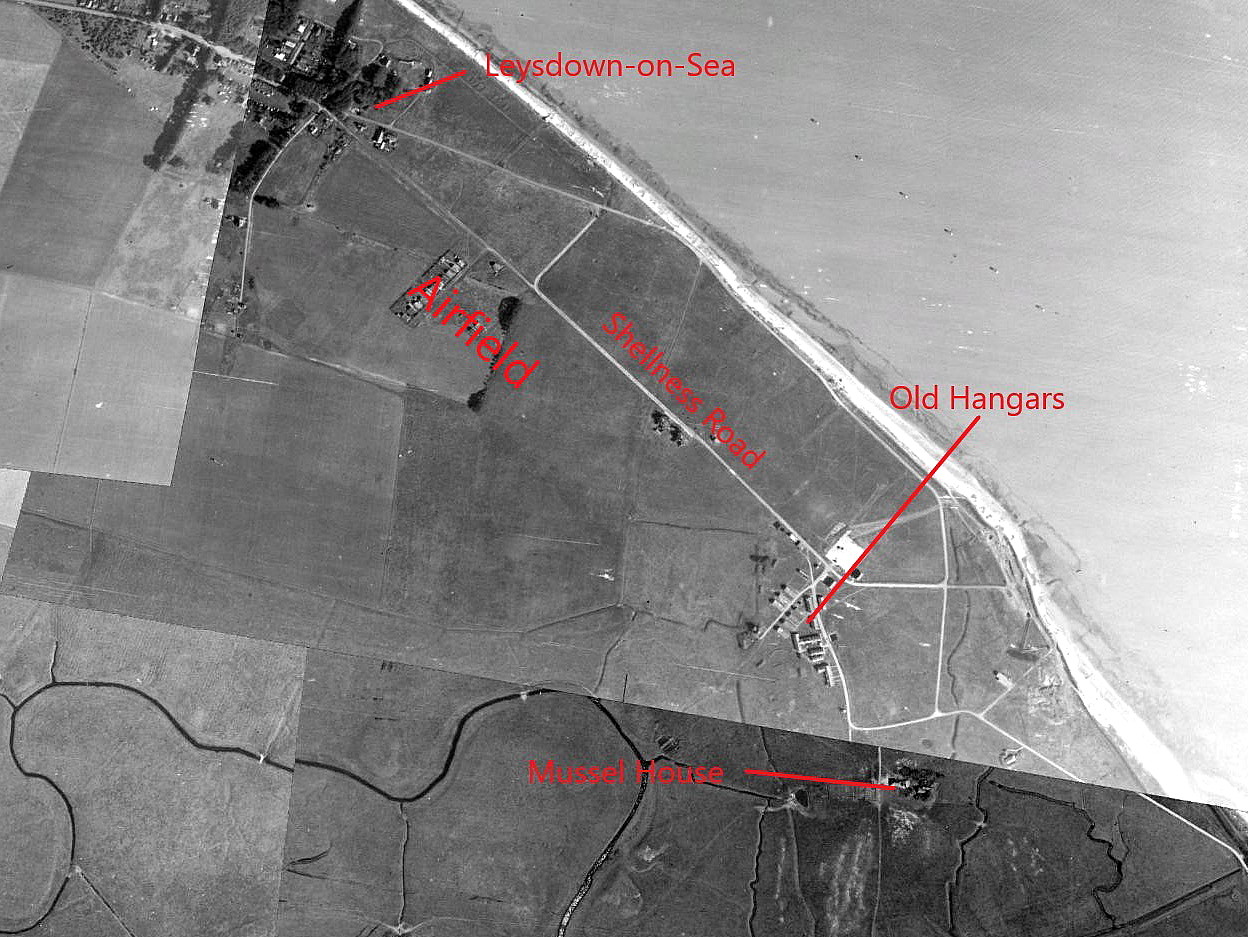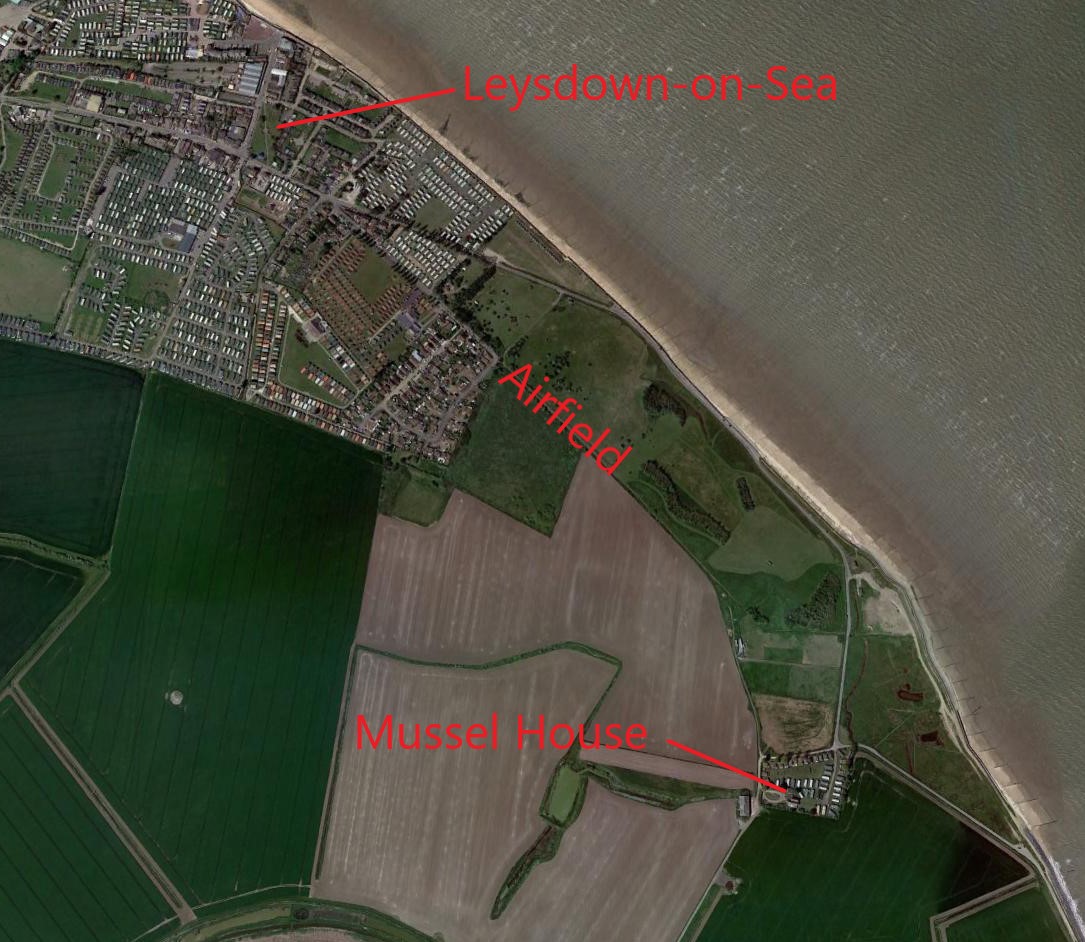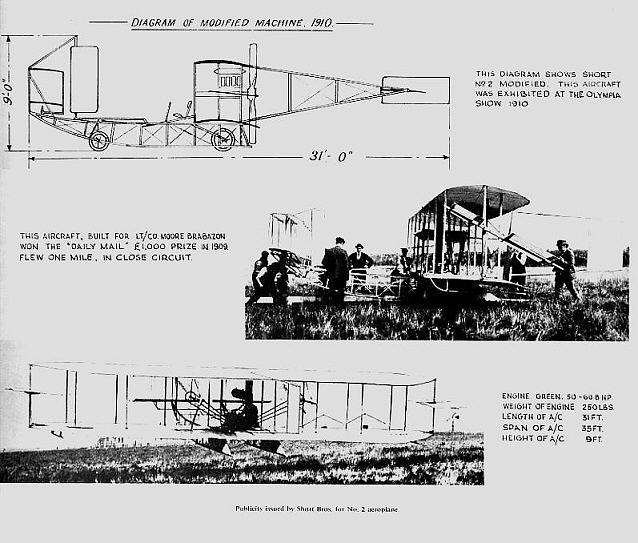Leysdown flying sites
LEYSDOWN: One of, if not the very first powered flying site in the UK. Not to confused with the WW2 RAF LEYSDOWN site on virtually the same area.
Also the site of the Short Bros factory, the very first purpose built aircraft manufacturing facility in the UK.
For nigh on twenty years I laboured under the impression that this site was often confused with the nearby flying site known as MUSSEL MANOR, MUSSEL BEACH and MUSSEL MARSHES, and more popular, as I have listed, SHELLBEACH and SHELLNESS. In 2020, it would seem, they are in fact - one and the same. The problem being that so many accounts, over the last hundred years or more, have been described by different names.
Note: All eight of these pictures were kindly sent by Mr Michael T Holder. Interesting to note that the fifth, seventh and eighth pictures were all captioned as being at SHELLBEACH.
Users: Short Bros factory and first British ‘Aero Club’ soon to become the ‘Royal Aero Club’
Note: Mr David Hill sent me a copy of this picture taken on the 9th May 1909, and published in, "Flying Past - A History of Sheppey Aviation" by David Hughes. David Hill tells us that C.S. Rolls is driving, Orville Wright is in the front left hand seat, Griffith Brewer is in the rear right seat and Wilbur Wright in the rear left hand seat. Permission to use this picture has been sought. Just over a year later C.S. Rolls was killed in a crash at the Aviation Meeting at SOUTHBOURNE, east of Bournemouth on the 12th July 1910, aged just 32. The very first aviator of a powered aeroplane to die in the U.K.
Manufacturing: When Short Bros were contracted to build six Wright biplanes under license in February 1909 they were, it is claimed, the first in the world to produce and build an aircraft factory. I suspect this should be more truthfully described as the first aircraft factory in the UK? These aircraft were sold to members of the Aero Club; The Hon. C S Rolls, F K McClean, Maurice Egerton, Cecil Grace and Alec Ogilvie. (Which leaves one aircraft spare?)
Incredibly, or so it is claimed, these aeroplanes were constructed from drawings largely developed from sketches Horace Short had made during the Wright brothers French tour in late 1908 and early 1909. Horace must have had an incredibly good eye for detail?
By August 1909 it is claimed Short Bros had eighty employees working at LEYSDOWN and soon after began to manufacture their own designs. The Short No.1 built for F K McCean was unsuccessful but the Short No.2 built for J T C Moore-Brabazon was flown very successfully. However, this was in fact , a modified 'Wright Flyer' design. There seems no doubt about it, the Short brothers made a far better job of the Wright 'Flyer' than they achieved. And indeed, having inspected an example, (it was probably Wilbur?), it appears that he declared he had never seen a better built example.
However, the Wright design was a 'dead-end street', despite all their efforts to patent the 'aeroplane' concept for themselves. It must also be mentioned that the 'Wright Flyer; was a very poor design, and very difficult to fly. Indeed, with modern simulations even test pilots have struggled to master it.
Note: These images were scanned from the most excellent book, British Aviation - The Pioneer Years, by Harald Penrose.
WAS THIS AT LEYSDOWN OR SHELLBEACH?
During the Aviation Meeting at DONCASTER in 1909, according to Harald Penrose in his most excellent book, British Aviation - The Pioneer Years, first published in 1967, it appears that Samuel Cody had taken the Oath of Allegiance to become a British citizen, and if more clement weather had prevailed, he would, without much doubt, have most probably performed a mile circuit to claim the £1,000 prize offered by the Daily Mail.
However: "His attempt was forestalled. Ten days later young Moore-Brabazon's Short No.2 was pulled out and placed on its Wright-type starting rail, but on turning the new 40-60-h.p. engine, fitted to comply with the 'all-British' requirement, something was heard to break. The bitter weather had frozen the water-circulating pump, and ice fractured the aluminium crankcase plate on which pump and magneto were mounted."
Just think about this when your car is next in for a major repair and replacement part. "In a couple of hours Horace Short had repaired it. On the next attempt the engine ran trouble-free, and the machine left the rail with ease. After flying a mile low down, on a directionally true, though undulating course, 'Brab' curved towards the official turning point, where Alex Ogilvie, a potential Short-Wright owner, was officially observing. Precariously completing the turn, the pilot headed back and managed to land within 50 yards of the launching point in a total of flying time of 2 minutes 36½ seconds."
"With this unremarkable performance Brabazon won the Daily Mail £1,000, jubilant that his hobby was becoming self-supporting, for the Shorts had charged £1,500 for the machine after rationalising their early optimism on costs following discovery that they had built the Wrights at a loss!" Once these early aviators got going, the rate of progress was rapid. "A few days later Moore-Brabazon flew 3½ miles - claimed as the longest distance to date by an all-British aeroplane. Cody had flown further of course, but was still then an American citizen.
SOME CONFUSION?
It would seem most likely that much of the confusion surrounding the name of this flying ground arises because the original Short Bros factory was, (or so it seems?), about half a mile away from the SHELLBEACH/MUSSEL MANOR flying ground. It was a corrugated iron shed measuring 100ft by 45ft and almost immediately inadequate to meet customer demand. By August 1909 a second shed had been built and it seems Short Bros were then employing 80 men to build their aircraft. These were mainly ‘Wright Flyers’ it seems.
When the Aero Club decided to move to EASTCHURCH it is claimed that Short Bros upped sticks and moved their ‘factory’ buildings across from LEYSDOWN.
A MATTER OF SOME CONJECTURE?
In September 2020 Mr Michael T Holder sent me this picture. At first glance I was delighted of course, but, needless to say I wanted to know exactly what type the aeroplane was, and closer inspection revealed something really quite interesting. The type didn't exist as far as I could make out and then, zooming in on the picture it soon became clear it was a composite picture superimposed on the beach scene. And, indeed, a picture composed by somebody with not much idea about aeroplanes?
The idea of composing composite pictures was nothing new, even in the early years of the 20th century. And of course, with modern technology a routine affair. But of course there is still that nagging doubt - could it really be a bungled job of editing a real aeroplane flying along the beach?
More for fun than anything else, here are my comments - in no particuar order: There are no wires on the left hand side, (as viewed), from the lower right hand wing to the upper right hand wing. Is the pilot pictured facing sideways? Is the very high mounted elevator borrowed from a kite picture? The lower wings appear to be of unequal span. The degree of dihedral and chord appear to vary at each end of the upper wing.
And, the sky between the wings seems much lighter than it should be? Plus of course there appears a large roughly 'U' shaped blank section below the position of the pilot. Last but not least, nobody on the beach is looking up to watch the aeroplane passing so low overhead. I trust I have proved the point that this is, in fact, a purely ficticious picture?
The main reason for going on to such an extent is actually quite a serious concern for anybody indulging in historical research. As is so often said, "A picture is worth a thousand words - and in the main - this is quite true of course. But, we must always be aware that pictures can be 'doctored'. In my research I have come across several examples.
LEYSDOWN: Early gliding site
Operated by: Charles S Rolls
Period of operation: 1909
NOTES: Whilst waiting for his powered Short-Wright Flyer to be finished, Charles S Rolls decided to learn something about the rudiments of flying with a Wright glider design and selected a site fairly near to the SHELLBEACH/LEYSDOWN flying ground on the side of a small hill or slope. Short Bros built this glider for him to experiment with.
LEYSDOWN: RNAS (Royal Naval Air Service) airfield
Location: On a field overlooking the beach
Period of operation: 1911 to at least 1918
NOTES: I have Alan Faupel to thank for this information: Opened in 1911 to support the off-shore gunnery range. A Gun Flight Detachment was based here from the 25th April 1917 and later became the Marine Observer School from the 1st April 1918. Acted as a satellite for RNAS EASTCHURCH.
Peter West
This comment was written on: 2017-08-07 16:02:39In the Eastchurch Aviation Museum (Facebook: Aviation History at Eastchurch) there is an military map of 1914 vintage on which an overlay shows the SEVEN different airfields on Sheppey. Open Tues; Thurs; Fri; Sat 10am-3pm.
Reply from Dick Flute:
Hi Peter, Many thanks for this information which I shall keep posted. Best regards, Dick
We'd love to hear from you, so please scroll down to leave a comment!
Leave a comment ...
Copyright (c) UK Airfield Guide


























